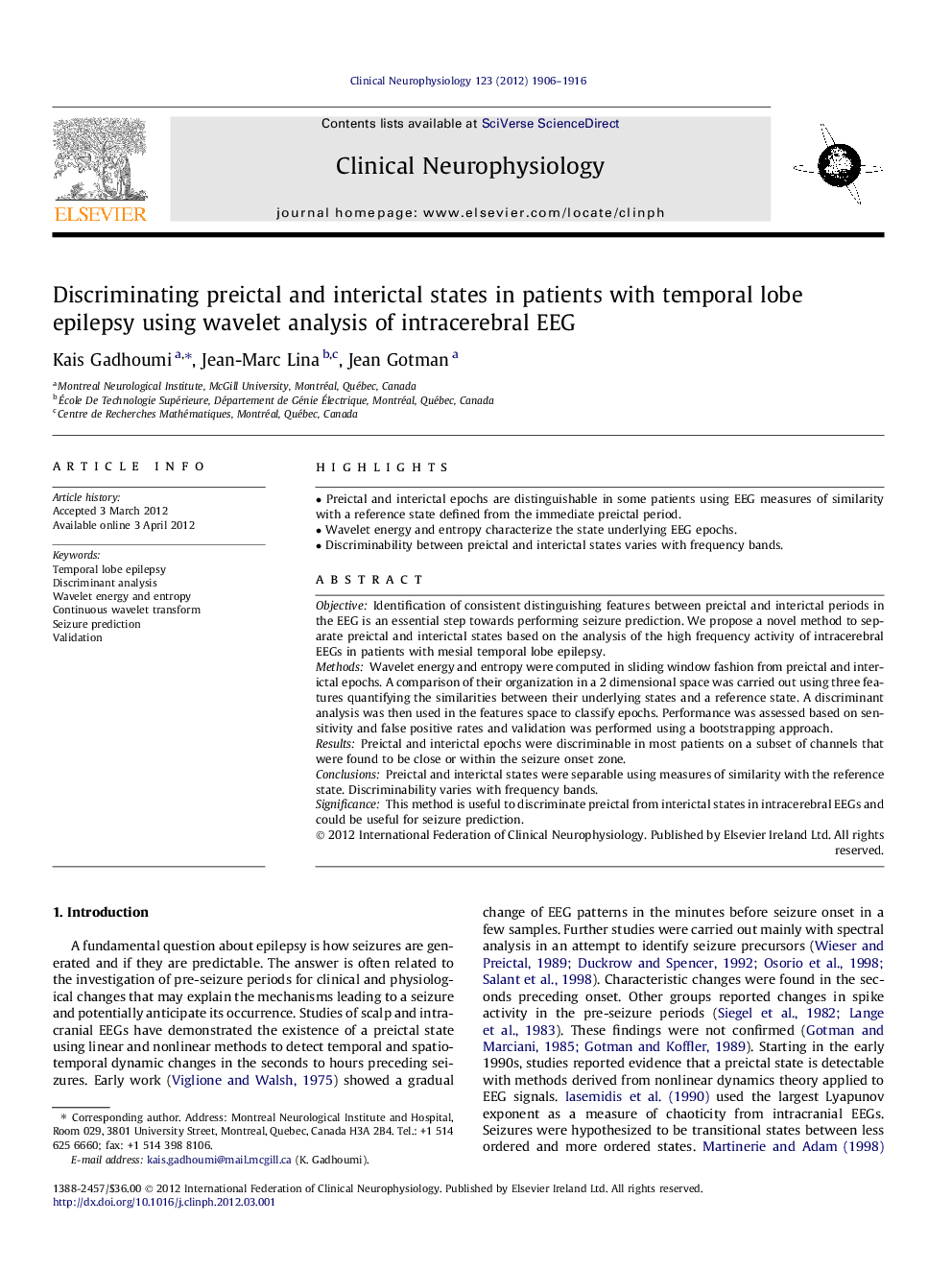| Article ID | Journal | Published Year | Pages | File Type |
|---|---|---|---|---|
| 3045371 | Clinical Neurophysiology | 2012 | 11 Pages |
ObjectiveIdentification of consistent distinguishing features between preictal and interictal periods in the EEG is an essential step towards performing seizure prediction. We propose a novel method to separate preictal and interictal states based on the analysis of the high frequency activity of intracerebral EEGs in patients with mesial temporal lobe epilepsy.MethodsWavelet energy and entropy were computed in sliding window fashion from preictal and interictal epochs. A comparison of their organization in a 2 dimensional space was carried out using three features quantifying the similarities between their underlying states and a reference state. A discriminant analysis was then used in the features space to classify epochs. Performance was assessed based on sensitivity and false positive rates and validation was performed using a bootstrapping approach.ResultsPreictal and interictal epochs were discriminable in most patients on a subset of channels that were found to be close or within the seizure onset zone.ConclusionsPreictal and interictal states were separable using measures of similarity with the reference state. Discriminability varies with frequency bands.SignificanceThis method is useful to discriminate preictal from interictal states in intracerebral EEGs and could be useful for seizure prediction.
► Preictal and interictal epochs are distinguishable in some patients using EEG measures of similarity with a reference state defined from the immediate preictal period. ► Wavelet energy and entropy characterize the state underlying EEG epochs. ► Discriminability between preictal and interictal states varies with frequency bands.
